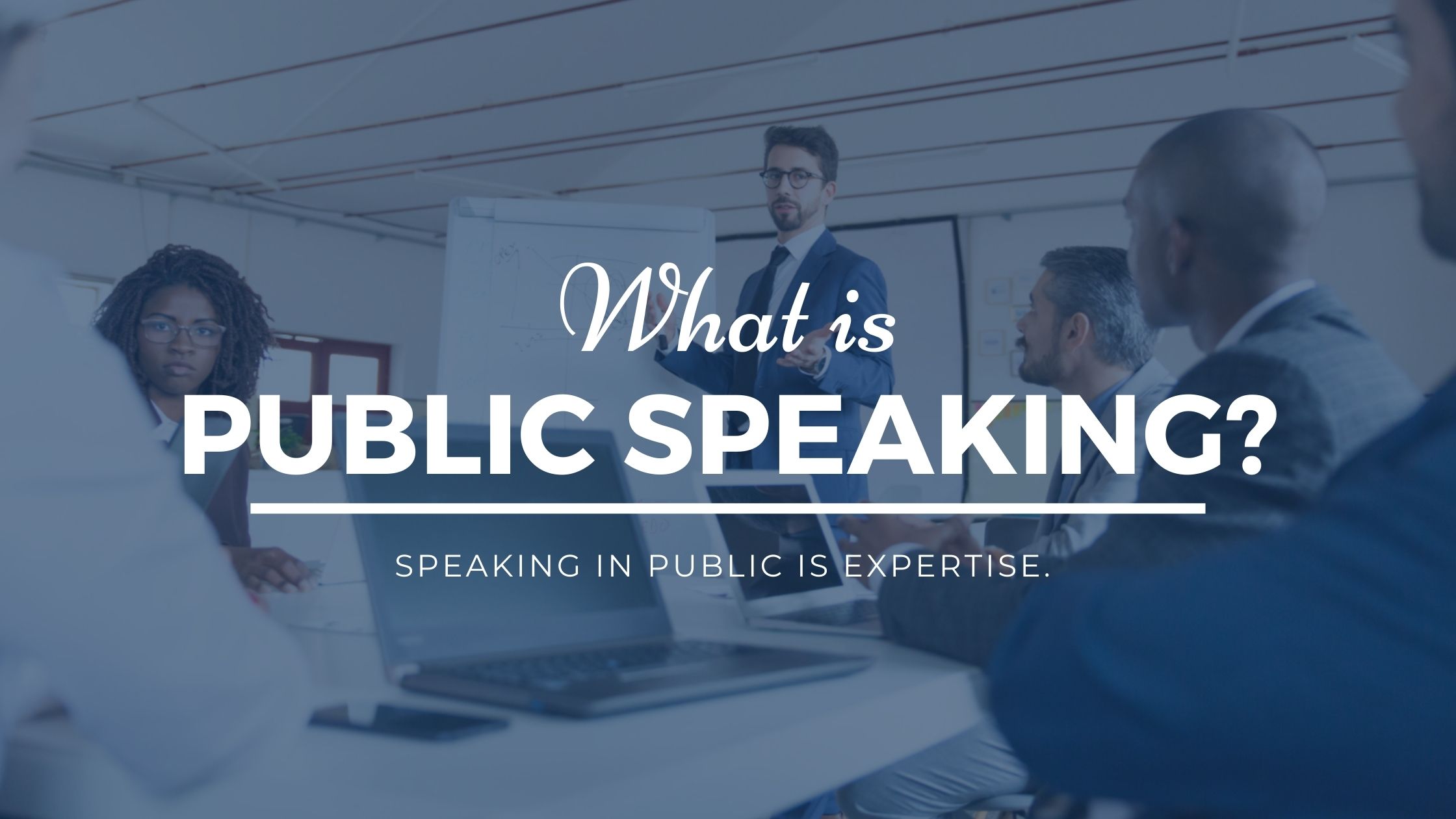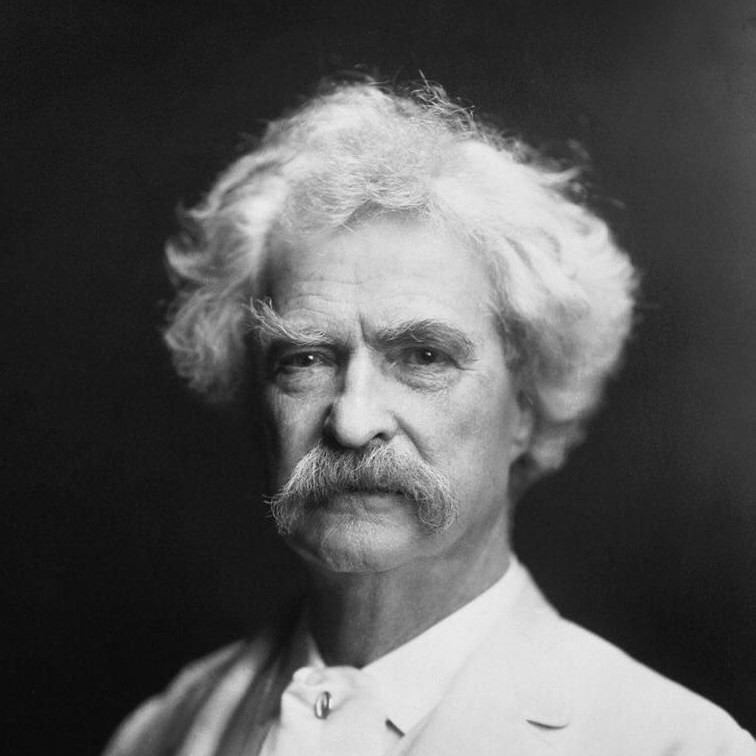Public speaking is the act of giving a speech or presentation to a live audience with a goal to inform, persuade, or entertain.
Many people cite public speaking as one of their biggest fears, but with practice, you can learn to build confidence and improve your skills to enjoy public speaking for any situation.
Being a good speaker is often critical for leadership positions in the world of business, community groups, government, and other settings.

Professional speakers combine critical thinking, a well-organized narrative, reasoning, research, and more to help communicate his or her ideas. Proper rehearsal techniques can help improve the flow of your presentation for your audience too.
These ideas can be taught to help you reach new heights with the art of public speaking.
Action Item
Make a list of two to five main points that you want to present. Write out each point in one or two sentences.
Jobs in Public Speaking
According to Indeed.com, there are currently 1,224,016 open full time jobs that you can get with a communications degree.
Whether you have a job in communications or not you may find that you are required to speak in public. In many organizations for example, you might be expected to speak during company meetings, events, or gatherings.
In other settings, such as community events, family get together, and other social events, you might need to get up in front of an audience as well. Whatever the circumstance is, public speaking is a great skill level to improve for your personal development.
Some ways to deliver great speeches and great presentations to an audience is with effective speech writing.

Public Speaking Classes
A communication degree or certificate can help advance your career. Develop your skills by taking classes in Public Speaking.
The person in responsible positions must be good speakers as there are many occasions when they are called for addressing the audience. Being able to speak well is an asset in any profession. Speaking skill can be cultivated and developed with approximate knowledge of the formal aspects of public speaking, and with practice.
The most significant requirement for public speaking is its preparation. Even persons who have natural skill in speaking need preparation to convey a good speech.

Characteristics of Public Speaking
Some of the characteristics of good public speaking or good speech are mentioned below:
- Clarity
- In the manner of an informal talk
- Speech should be vivid and concrete
- Makes the speech brief
- Speech should be interesting
- Audience-oriented
Pro Tip
Keep a positive tone and attitude.
Clarity
Clarity is the first main feature of a good speech. Your speech should be successful in conveying to the audience the ideas, emotions, facts or arguments, you want to express.
In the manner of an informal talk. A good speech is closer to a personal and informal chat between two close friends. When delivering a speech, there should be an impeccable rapport between you and the audience.
Speech should be vivid and concrete. The speech should be vivid including concrete facts easy to perceive and visualize.
Makes the speech brief. The concentration of an average audience does not last more than twenty or 25 minutes. Hence, an ideal speech should not exceed that time, unless the audience is motivated by certain interesting facts during the speech. TED discovered and popularized shorter speeches.
Speech should be interesting. Quotations, anecdotes and humorous touches often make a speech very interesting. The quotations should be familiar and accepted by experts. Anecdotes should be novel, brief and in good taste. Humor should be typical, spontaneous and gentle.
Audience-oriented. A good speech is always audience-oriented. For delivering an audience-oriented speech, one should study:
- Whether the audience is the general public or specialized?
- How large is the audience?
- What is the age group of listeners?
- What are their social, religious, political and economic views as well as prejudices of the listeners?
- What would be the response of the expected audience?
Public Speaking Techniques
Speeches are hard for most of us. The public speaking techniques can be adopted to improve the public speaking.
- Selection of the topic for speech
- Preparation of the speech
- Guidelines for the introduction of the speech
- Guidelines for organizing the body of the speech
- Conclusion remarks of the speech

Selection of the topic for speech
Your first step in formal speechmaking is to decide the topic of your presentation.
In some cases, you will be allotted a topic, normally one within your area of specialization. In fact, when you are asked to make a speech on a specified topic, it is probably to be because of your knowledge of the topic.
In your search for a suitable topic, you should be guided by three basic factors.

- The first is your background and knowledge.
- The second basic factor is the interests of your audience.
- The third basic factor is the occasion of the speech. Your selection should be justified by all three factors.
Preparation of the speech
After you have decided what to talk about, you collect the information you need for your speech.
This step may require searching through your mind for experiences or ideas, final research in a library or in company files, collecting information online, or consulting people in your own company or other companies.
Although variations are sometimes appropriate, you should commonly follow the time-honored order of a speech: introduction, body and conclusion.
Pro Tip
Finish with a strong and motivating appeal for action. Inspire your audience!
Guidelines for the introduction of the speech
The introduction of a speech has much the same goal as the introduction of a written report, to gear up the listeners (or readers) to pick up the message. But it usually has the additional goal of arousing interest.
Unless you can arouse interest at the beginning, your presentation is probable to fail. The techniques of arousing interest are limited only by the imagination.
One possibility is a human-interest story, for storytelling has a strong appeal. Humor, another possibility, is probably the most widely used technique. In addition to arousing interest, your opening should lead to the theme of your speech.

Guidelines for organizing the body of the speech
Organizing the body of your speech is much like organizing the body of a report. You take all and divide it into comparable parts. Then you take those parts and divide them. You continue to divide as far as it is practical to do so.
In speeches, nevertheless, you are more likely to use factors rather than time, place, or quantity as the basis of division as in most speeches; your presentation is likely to build around issues and questions that are subtopics of the subject. Even so, time, place, and quantity subdivisions are possibilities.
You need to stress the transitions between the divisions because, unlike the reader who can see them, the listeners may miss them if they are not emphasized adequately. Without clear transitions, you may be talking about one point and your listener may be relating those ideas to your former point.

Conclusion remarks of the speech

Like most reports, the speech normally ends by drawing a conclusion. Here you bring all that you have presented to a head and accomplish whatever goal the speech has. You should consider together with these three elements in your close:
- a restatement of the subject,
- a summary of the key points developed in the presentation, and
- a statement of the conclusion.
Adding the speech to a climactic close—that is, making the conclusion the high point of the speech—is usually effective. Present the concluding message in strong language—in words that gain attention and will be remembered.
In addition to concluding with a summary, you can give a suitable quote, use humor, and call to action.
Importance of Public Speaking
- Individual
- Organization
- Society
Individual
When you apply for a job, the employer evaluates you based on certain characteristics. Your capability to communicate is one such characteristic, and it comes across clearly in an interview.
Your ability to communicate not only influences whether you are employed but it determines your progress in the job.
Employers realize that it is the ability to communicate that often separates an exceptional employee from the ordinary ones. Being able to organize your thoughts and give a public speech is another substantial determinant of your personal and professional success.
Being able to give an efficacious public speech enhances your self-esteem; you feel good about yourself.

Organization
It has been said that an organization is only as good as the individuals who constitute make it. It could also be said that an organization communicates only as effectively as do its individual members.
There is a need in business for people who can effectively present the organizational viewpoint to the public. The average business organization does a poor job of acquainting the public with its contributions to society.
From a communication viewpoint, it does not matter how clean the motives of the organization are. What matters are, what the public knows about such things and how the public responds to this knowledge of a company’s activities.
Unless the public is made aware of what the business is doing and why, the purposes on the part of business will be of no use. Only through effective external communications can business present the information that is most likely to result in a desirable image.
One of the most crucial and effective formats in which to present that information is public speech.

Society
We live in a society in which the free expression of ideas is not merely tolerated but encouraged. Issues are analyzed and viewpoints are presented in many different formats.
Newspaper editorials, town hall meetings, and discussions (or arguments) are a few settings in which opinions are aired on those subjects about which the participants feel strongly.
It is often through public speaking that ideas are presented for public evaluation.
This was as true in the prelude to the Declaration of Independence as it is today in election campaigns at all levels. It is as evident at an annual meeting of stockholders’ as at a monthly union local meeting.
For lack of an effective speaker, a good idea may fail to get consideration. A lack of articulate opponents may allow the passage of legislation of little merit. Free society requires willing and articulate people of different viewpoints.
Pro Tip
Practice your speech at least three times, and practice in front of a friend for feedback.
Modes of Delivery in Public Speaking
There are four main modes of delivery used in public speaking:
- Impromptu
- Extemporaneous
- Memorized
- Manuscript
Impromptu
The impromptu speech is delivered with little opportunity to prepare. Its main virtue is that it is spontaneous; its main shortcoming is that it is usually not well planned.
When you are urged “say a few words” without any advance warning, what leads is an impromptu speech. This often leads to the most authentic talks.

Extemporaneous
Extemporaneous speaking is somewhat more formal than impromptu speaking. You have an opportunity to plan, and the resulting speech is better organized than an impromptu speech.
You will normally rely somewhat on notes, but you will not read to the listeners. Most public speeches are delivered extemporaneously.
Memorized
A memorized speech allows for a well-planned expression of ideas. When presenting a speech from memory, how, speakers have tendency to lose a certain amount of naturalness and sometimes sound and look quite wooden.
The possibility of forgetting the speech is another negative aspect of the memorized speech.

Manuscript
Manuscript speaking is relied on for more formal occasions. Speaking from a manuscript, you can be very precise, and you can carefully control the exact message the listeners receive.
Naturally, it in general takes longer to develop a manuscript speech, and often the manuscript becomes a barrier between you and the listeners.
Public Speaking Checklist
The ability to speak effectively depends on some trades and qualities. It is also dependent upon communication situation.
The following is a checklist of features that are often associated with effective public speaking skills.

- Self-confidence
- Knowledge of the topic
- Understanding of the audience
- Proper articulation
- Pleasing voice quality
- Sincerity
- Emotional control
- Fluency
- Friendliness
- Reasoning
- Sympathy
- Open-mindedness
- Humility
- Responsiveness
- Awareness
- Humor
- Forcefulness
- Spontaneity
- Tactfulness
- Intelligence
Need of Public Speaking
The best presenters and speakers speak in a usual way that invites you to make some modifications in your life, no matter how small.
Thus, there are three vital purposes of public speaking which are explained below:

- Informative Speaking
- Persuasive Speaking
- Entertaining Speaking
Informative Speaking
Informative speaking is regarded as one of the most common types of public speaking. The main purpose of informative presentations is to share one’s knowledge of a subject with an audience. Reasons for making an informative speech differ broadly.
Example: Let’s say, you might be asked to teach a group of co-workers on how to use new computer software or to report to a group of managers how your latest project is coming along. It is incorporated into various different works.
Therefore, learning how to speak efficiently has become an important skill in today’s scenario.
Action Item
Tell your audience what you’re going to tell them, tell them it, and then summarize what you’ve told them.
Persuasive Speaking

Another reason for speaking to an audience is to persuade others. In our everyday lives, we are often called on to motivate, convince, or otherwise persuade others to take an action, change their beliefs, or reconsider a decision.
Persuading customers to purchase your firm’s products, advocating for music education in your local school district, or inspiring high school students to attend college all involve affecting other people through public speaking.
Whether public speaking is something you do every day or just a few times a year, convincing others is a challenging job. If you develop the skill to convince successfully, it can be professional as well as personally rewarding.







